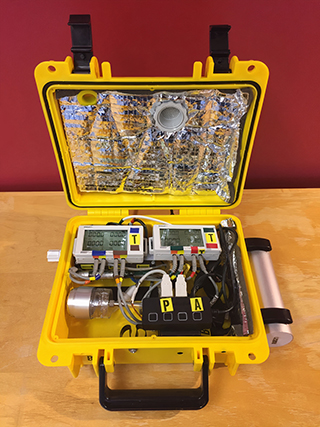
Gary Adamkiewicz, Ph.D., is bringing the conversation about healthy environments indoors. An associate professor of environmental health at Harvard University, Adamkiewicz works to understand – and control – sources of air pollution in the home, with a focus on low-income communities and public housing developments.
“We know that 90% of our time is spent indoors, and a big fraction of that is spent at home,” he explained. “So why not start there when trying to create better environments?”
As a proud first-generation college student, Adamkiewicz started out studying chemical engineering, later earning a Ph.D. in the field from the Massachusetts Institute of Technology. While conducting his doctoral research on developing air pollution control strategies, he became interested in asthma. But it was when he connected with Jack Spengler, Ph.D., at Harvard University that everything clicked.
“He [Spengler] was examining factors in public housing that were linked to asthma, and that work really brought together a lot of my research interests – asthma risk factors, working with vulnerable populations, and taking a solutions-oriented research approach,” he said.
Now, Adamkiewicz sees housing as an opportunity to improve health. Through his work with two NIEHS-funded centers at Harvard, he partners with community groups to reduce housing-related exposures in the city.
The Indoor Neighborhood
There's a long list of exposures within the home that contribute to poor air quality and health, including gas stoves that emit nitrogen dioxide, allergens related to pest problems, and chemicals that are released from personal care products and building materials. On top of that, housing attributes, like home size and ventilation, and resident activities, like cooking practices and personal care product use, also influence indoor air quality.
“In our research we consider all these factors to get a complete picture of how an individual’s housing may shape their health – and then we work to reduce those exposures,” said Adamkiewicz.
With support from the Center for Research on Environmental and Social Stressors in Housing Across the Life Course (CRESSH), Adamkiewicz and team set out to better understand the factors driving levels of fine particulate matter air pollution (PM2.5) in Chelsea, Massachusetts homes. He teamed up with partners at the Boston University School of Public Health and the organization GreenRoots to recruit study participants and placed real-time air monitors in residents’ homes. They also conducted a home visual assessment and collected information on activities in the home.

“It’s a leap of faith to allow a researcher you don’t know into your home. But we were extended trust because of our partnership with GreenRoots,” he said.
They found that families who rented and lived multifamily buildings had significantly higher levels of PM2.5 compared to homeowners. The researchers attributed this to resident activities and building-level factors, like cooking, smoking, and building size.
“What your neighbor is doing matters. If your neighbor is cooking, those pollutants are probably finding their way into your unit,” said Adamkiewicz. “People talk a lot about neighborhood effects, but there is also an ‘indoor neighborhood’ we need to consider.”
Through individual exposure reports and a community meeting, the research team returned study results to participants and provided them with actions to improve indoor air quality, such as opening windows or using exhaust fans to eliminate indoor pollutants.
“Our goals were to teach study participants about sources of indoor air pollution and empower them to take action on air quality issues at home and in their community.”
People, Places, Policies
For Adamkiewicz, moving his research to action is all about the three P’s – people, places, and policies.
For the people piece, he explained that it’s critical to educate residents so that they have the tools and resources necessary to create and maintain a healthy living space.
Places is all about building healthier buildings and making sure they operate and are maintained correctly.
Policies at the local level – such as smoke free housing and better pest control – can help create healthy spaces and keep them healthy for the long term. This is especially important in public and multifamily housing.
For students who want to make sure their research has an impact, Adamkiewicz offered this advice: get involved at the grassroots level, partner with community groups, and work with academics who are doing action-oriented research.
Gary Adamkiewicz

